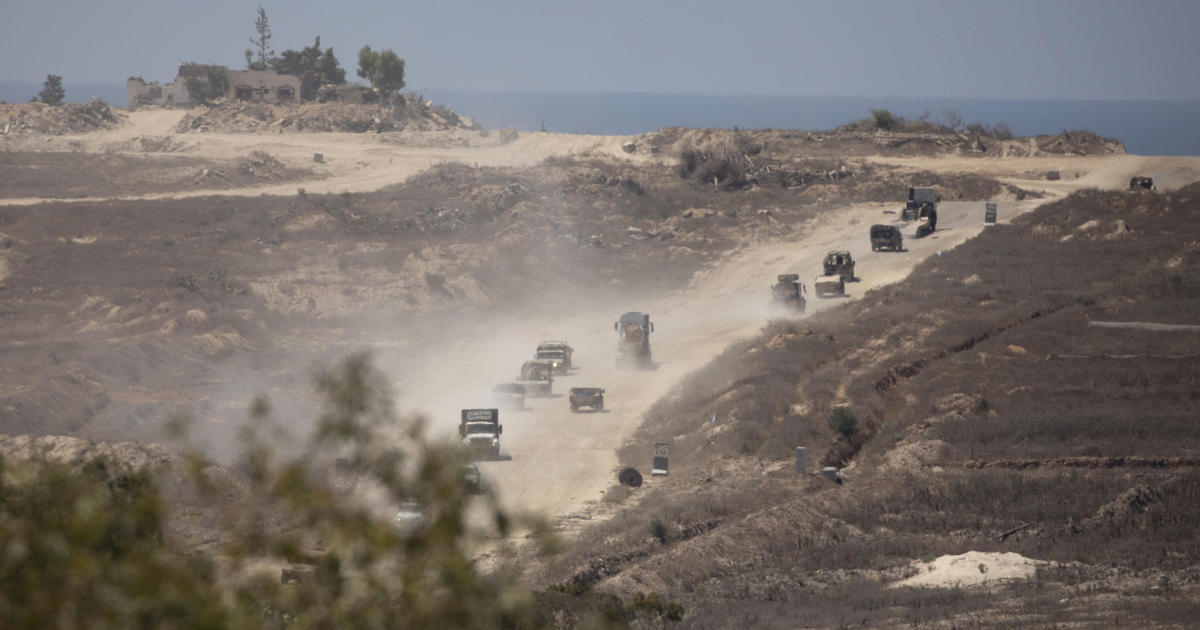
Talks about how a cease-fire in Gaza can be implemented were restarted in Cairo Thursday, a U.S. official confirmed.
President Biden’s top Mideast adviser, Brett McGurk, is participating as part of the U.S. delegation with Egypt and Israel. The discussions encompass a number of technical issues, among them, security of the border between Gaza and Egypt, the Rafah crossing and Israeli Defense Force withdrawals from Gaza and the Philadelphi corridor. CIA Director William Burns is also expected to travel to the region, since talks may extend through the weekend.
Secretary of State Antony Blinken told reporters that during his three-hour conversation with Prime Minister Benjamin Netanyahu earlier this week, Israel agreed to the plan. The secretary said it outlines for the IDF “a very clear schedule and locations for withdrawals.” However, since they spoke, Netanyahu has made public remarks that contradict the statement.
Implementation details on related key technical issues are still very challenging, but the U.S. remains hopeful that the final “bridging” proposal it presented last week will lead to a breakthrough. On Thursday, Qatar was not participating in this portion of the hostage and cease-fire diplomacy efforts, though it’s still a party to the broader negotiations.
The U.S., Qatar and Egypt refer to their proposal as a cease-fire deal, but technically, it would begin with a six-week pause in fighting during what would be Phase One. During that time, some hostages would be released and Palestinian prisoners freed from Israeli detention centers.
An agreement to begin talking about an enduring cease-fire would follow, and during that extended pause in fighting,other incentive measures would be taken, including the release of more hostages.
This bridging deal would be an agreement between Israel and Hamas to begin talking about ending the war. During his trip to the region, Blinken summed up the proposal as “hostages are released, prisoners are exchanged and negotiations commence on the conditions necessary for an enduring ceasefire.”
The Biden administration maintains that the bones of the package presented by the U.S., Qatar and Egypt had already been accepted by Israel in principle, and that President Biden had explained the package to the public in May. This hostage and cease-fire deal is the centerpiece of the Biden strategy to lower tensions throughout the region.
On a related note, the Qatari prime minister is expected to travel to Iran on Monday. Earlier this week, Iran indicated to CBS News that it is closely watching the talks as it decides whether to retaliate against Israel for assassination of Hezbollah and Hamas leaders.
“Iran’s response must be carefully calibrated to avoid any possible adverse impact that could potentially influence a prospective ceasefire,” according to an emailed statement from the spokesperson for the Permanent Mission of the Islamic Republic of Iran to the U.N.
Earlier this month, U.S. Ambassador to the United Nations Linda Thomas-Greenfield outlined some of President Biden’s other goals during her remarks before the U.N. Security Council. She said the Gaza deal would include the release of all hostages, a vaccination campaign to stop the spread of polio, and restoration of services including water and electricity to displaced Palestinian civilians in the Gaza Strip. She also said it would halt fighting in Lebanon. Blinken has recently also said a deal would help lower tensions in the Red Sea.
In remarks before the U.N. Security Council Thursday, Thomas-Greenfield appealed to Hamas to agree to the deal and called on Israel to work with humanitarian agencies to provide polio vaccines to Palestinian civilians, especially children in Gaza. Tensions in the Palestinian West Bank are also high, and the ambassador prevailed on Israeli authorities to intervene to stop attacks by violent Jewish settlers against Palestinian civilians and hold perpetrators to account.
and
contributed to this report.






